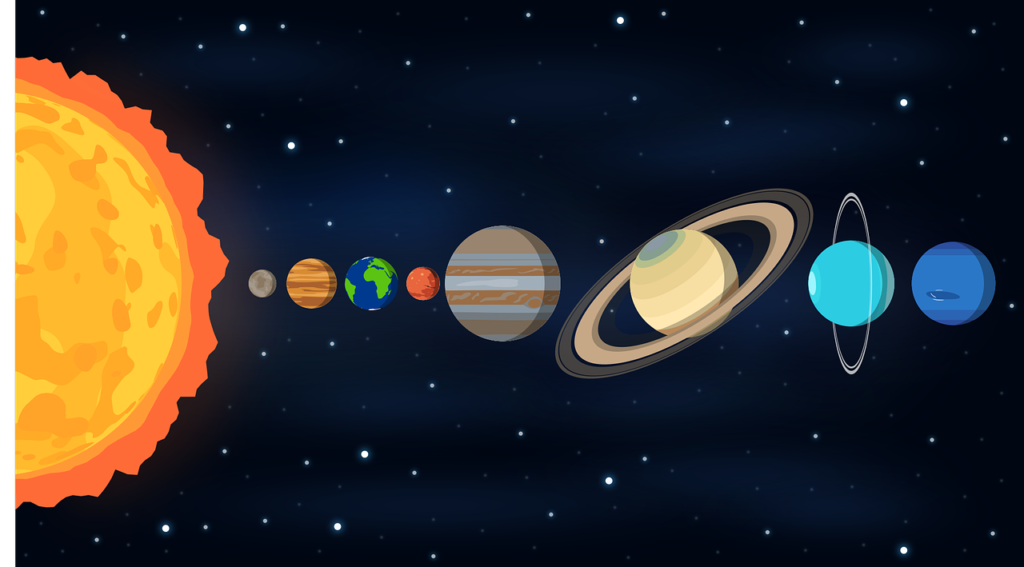The Earth Really Does Not Revolve Around The Sun! No, really…
3 min read
Hold your horses and throw out those school textbooks (well, not literally), because here’s a revelation that might just turn your cosmological world upside down! The idea that the Earth gallantly revolves around the sun might be a tad oversimplified. Welcome to the curious concept of the barycenter, a point around which celestial bodies, like the Earth and the Sun, actually revolve! Intrigued? Read on…
The Barycenter: The True Center of our Solar Dance
Imagine a teeter-totter on a playground. If two children of the same weight sit on either end, the pivot point, or the center of mass, will be right in the middle. This pivot point is analogous to the barycenter in celestial mechanics.
Now, consider our Sun and the Earth on a colossal cosmic teeter-totter. The Sun is much more massive than the Earth, so naturally, the pivot point, our barycenter, is much closer to the Sun. However—and here’s the twist—it’s not exactly at the center of the Sun!
That’s right! The Earth does not revolve around the Sun, and vice versa. Instead, both the Earth and the Sun revolve around this common center of mass, the barycenter.
A Dynamic and Shifting Point
The barycenter is not a fixed point. Why, you ask? Well, our solar system is not just the Sun and the Earth—it’s a bustling neighborhood with planets, moons, asteroids, and more. Each of these celestial bodies exerts a gravitational pull, affecting the position of the barycenter.
Sometimes, the barycenter might be within the Sun, but at other times, it might be outside the Sun’s surface! It’s like a dance where the step and twirl of every dancer affect the center around which they all revolve.
The Earth-Sun Tango
Let’s focus back on our Earth-Sun duo. The Earth takes about 365.25 days to complete one orbit around the barycenter. While the Earth is doing its round, the Sun is also doing a little wobble around this point, creating a cosmic dance that is harmonious and endlessly fascinating.
This dance is not a perfectly smooth waltz, however. It’s more like a dynamic jive, adjusting and readjusting to the pulls and pushes of the other celestial bodies in our solar system, ensuring the barycenter is always in flux.
Why does this Matter?
Understanding the concept of the barycenter is crucial to studying celestial mechanics and the dynamical interactions within our solar system. It’s this very principle that helps astronomers discover exoplanets orbiting distant stars. When a star wobbles around its barycenter due to the gravitational pull of its planets, it gives scientists clues about the existence and properties of those planets.
It’s not just a matter of correcting a common misconception—it’s about unlocking the myriad mysteries of our universe and perhaps stumbling upon worlds and wonders we never imagined!
Conclusion
So, the next time you look up at the Sun, remember, it’s not just us orbiting around it. It’s a complicated, dynamic, and beautiful dance around a common point, the ever-shifting barycenter, with every planet and celestial body in our solar system contributing to the rhythm of this cosmic ballet.
The understanding of this seemingly inconspicuous point in space can expand our knowledge about the unseen, unexplored worlds lurking in the vastness of our universe, taking us one step closer to unraveling the profound mysteries of the cosmos.
In a nutshell, our simplistic notion that the Earth revolves around the Sun is an easy-to-grasp approximation of a much more intricate and marvelous reality. It’s the dance of the barycenter that truly orchestrates the celestial symphony we are all part of! Keep dancing and keep wondering, because the universe is teeming with surprises and discoveries waiting to be made!


